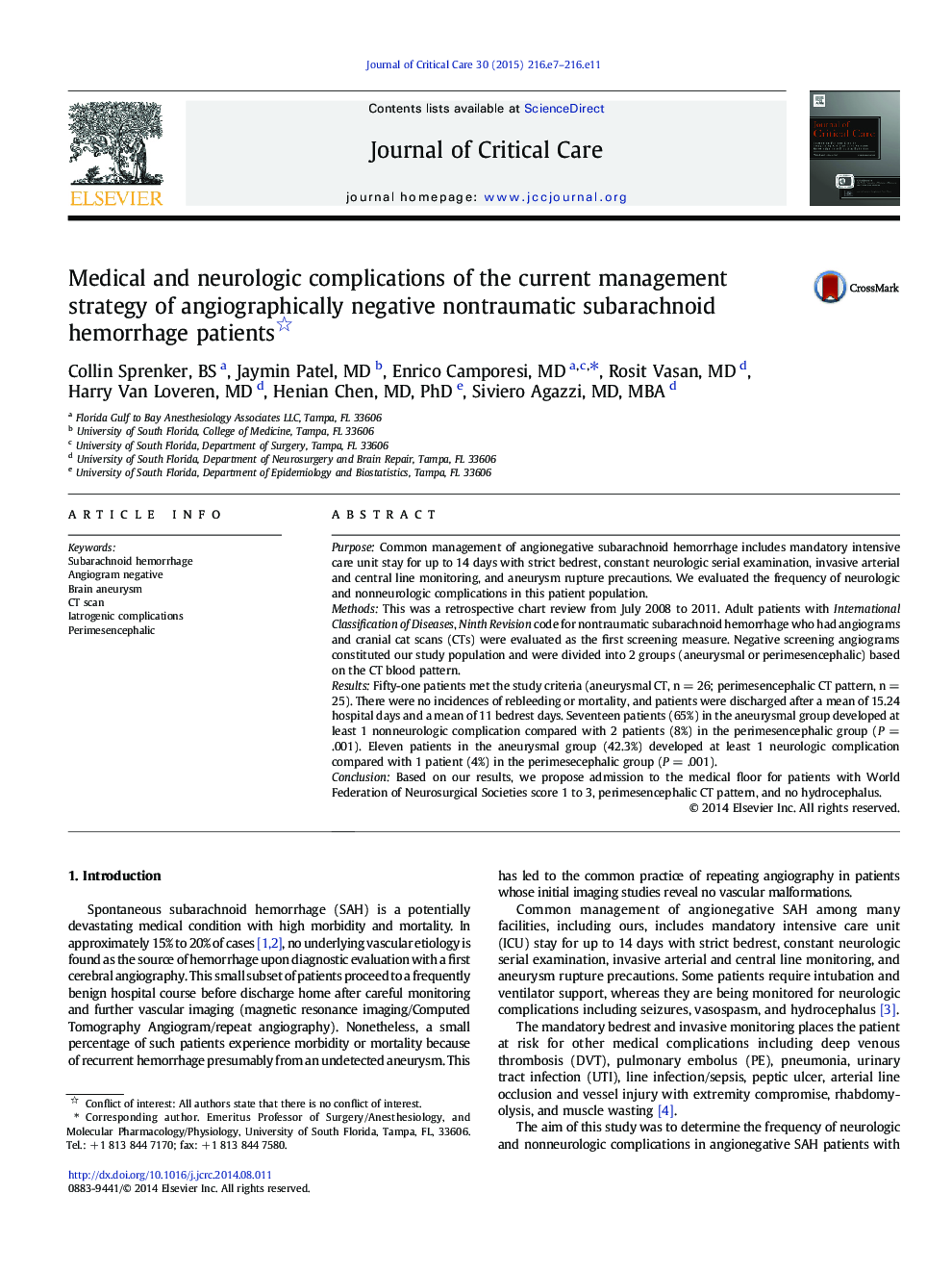| Article ID | Journal | Published Year | Pages | File Type |
|---|---|---|---|---|
| 5885687 | Journal of Critical Care | 2015 | 5 Pages |
PurposeCommon management of angionegative subarachnoid hemorrhage includes mandatory intensive care unit stay for up to 14 days with strict bedrest, constant neurologic serial examination, invasive arterial and central line monitoring, and aneurysm rupture precautions. We evaluated the frequency of neurologic and nonneurologic complications in this patient population.MethodsThis was a retrospective chart review from July 2008 to 2011. Adult patients with International Classification of Diseases, Ninth Revision code for nontraumatic subarachnoid hemorrhage who had angiograms and cranial cat scans (CTs) were evaluated as the first screening measure. Negative screening angiograms constituted our study population and were divided into 2 groups (aneurysmal or perimesencephalic) based on the CT blood pattern.ResultsFifty-one patients met the study criteria (aneurysmal CT, n = 26; perimesencephalic CT pattern, n = 25). There were no incidences of rebleeding or mortality, and patients were discharged after a mean of 15.24 hospital days and a mean of 11 bedrest days. Seventeen patients (65%) in the aneurysmal group developed at least 1 nonneurologic complication compared with 2 patients (8%) in the perimesencephalic group (P = .001). Eleven patients in the aneurysmal group (42.3%) developed at least 1 neurologic complication compared with 1 patient (4%) in the perimesecephalic group (P = .001).ConclusionBased on our results, we propose admission to the medical floor for patients with World Federation of Neurosurgical Societies score 1 to 3, perimesencephalic CT pattern, and no hydrocephalus.
